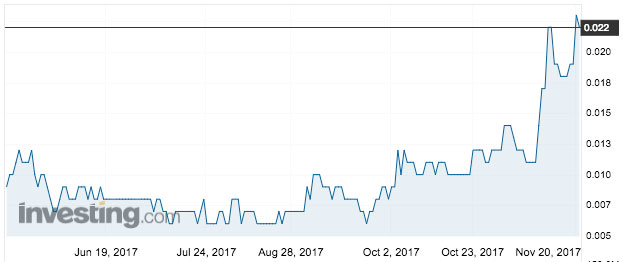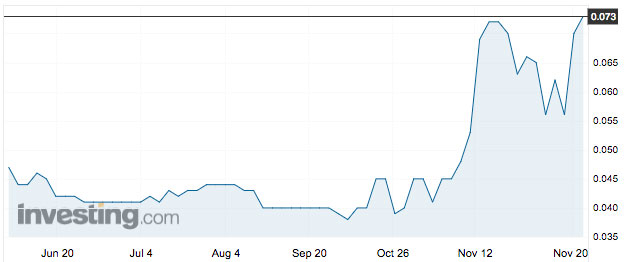‘Real’ and ‘widespread’: Marindi and Strike add weight to Pilbara gold rush
Mining
Mining
Pilbara gold explorers Marindi Metals and Strike Resources made strong gains after both uncovered evidence of conglomerate-hosted gold on their respective Pilbara tenements.
Marindi (ASX:MZN) gained more than 21 per cent in Monday lunchtime trade after telling investors a recent field trip to its Bellary Dome project resulted in the discovery of 63 gold pieces and flattened nuggets or coarse gold, from the panning of a creek close to old workings.
Strike (ASX:SRK) climbed almost 18% after a review of data from a West Pilbara site confirmed the existence of conglomerate-hosted gold.
Marindi will now go ahead with the purchase of an exploration licence near Paraburdoo on the Pilbara Basin’s southern edge, exercising an option it acquired in November.
The tenement hosts a 25km strike of the Mt Roe Basalt where it overlies the Bellary Formation.
The Bellary Formation is the lowermost unit of the Fortescue Group. Mt Roe Basalt is a volcanic rock formation in the Pilbara’s Fortescue Basin which is known to host conglomerate gold and lithium.

Marindi collected five pans of material, which collectively weighed about 15kg and was sieved to 6mm, returning eight gold pieces measuring 1-3mm. The largest nugget being 6mm.
The company believes the presence of both coarse and nugget gold indicate that the source of the gold is nearby, and that limited drilling of the conglomerate undertaken in the early 1980s was likely ineffective in assessing the gold potential.
The discovery potentially opened up the southern Pilbara to the same mineralisation that has been uncovered by Novo Resources and Artemis Resources about 240km to the north, Marindi managing director Joe Treacy said.
Artemis (ASX:ARV) and Canadian partner Novo Resources kicked off a Pilbara gold nugget rush on July 13 when they made a now legendary announcement regarding a gold nugget find at Purdy’s Reward, south of Karratha, Western Australia.
“Everyone else is on the northern edge of the basin and we’re on the southern edge, but we’re in the same rock types as where they’re getting the nuggets and the gold up at Purdy’s,” Mr Treacy told Stockhead.
Mr Treacy believes the conglomerate-hosted gold discoveries made in the Pilbara are real and widespread — though there were questions over the economic viability of the deposits.
“People have looked for gold in conglomerates for decades in the Pilbara and have always been disappointed. But the stuff that Novo and Artemis have got, I think is real. There’s no doubt that it’s there and it’s pretty widespread,” he said.
“Whether it can be turned into an economic resource is another question because these things are always difficult to assess.
“But it’s different to what people have seen before and it’s a bit of a surprise that it hasn’t been turned up historically with a lot of the work that has been done.”
Marindi has now engaged a prospector to go over the landholding with a metal detector.
Meanwhile, Strike told investors a review of data from its Paulsens East tenement in the West Pilbara had confirmed the existence of conglomerate-hosted gold.

Strike made a point of noting the proximity of its tenements, which were initially pegged for lithium, to projects held by other ASX-listed explorers who have been linked to the recent gold nugget rush in the Pilbara, such as Kairos Minerals and De Grey Mining.
The company has historically held a number of mining tenements in the Pilbara principally for their iron ore potential, which is associated with the Fortescue Group of rocks.
Strike now plans to undertake rock sampling and geological mapping ahead of a potential drilling program.